#murad iv
Text
Rewatching the Murad era of Muhtesem Yuzyil: Kosem sure hits different now that I've obsessed about Alicent and Aegon's mother-son relationship a 100 different ways. Unfortunately, my baby Alicent is not the iron-fisted force of nature Kosem is, and Murad shares Aegon's impulsive brashness but his decisions pan out better. The mother-son dynamic though, and the fact that both mothers outlived the sons...plus, judging by the S2 trailer, just like Murad, Aegon is going to make a habit of not heeding the woman who enthroned him.
Sons as their mother's sword arm except the blade is poisoned, URGH!!!!

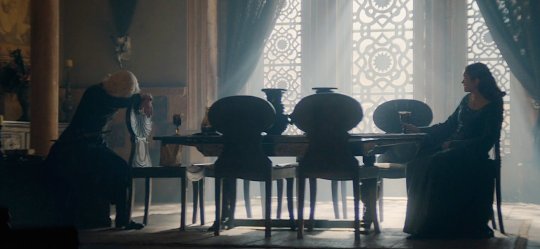


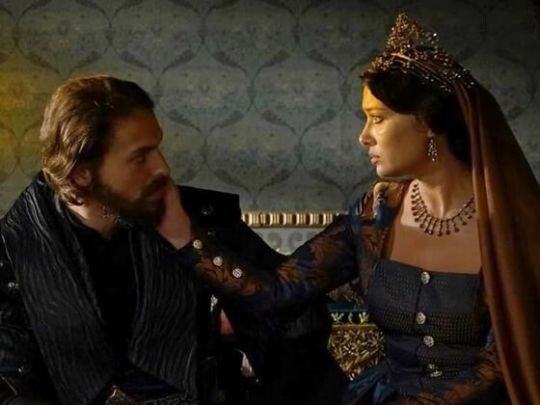
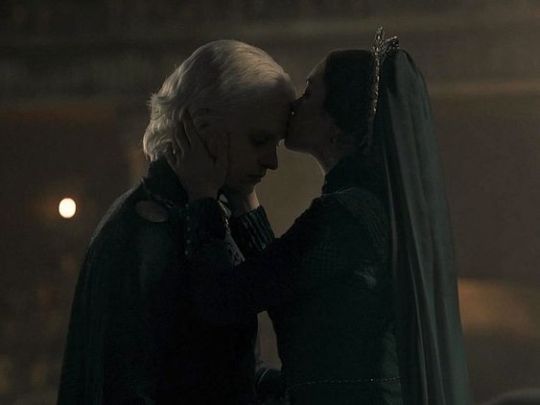


#muhtesem yuzyil#murad iv#kosem sultan#aegon ii targaryen#alicent hightower#muhtesem yuzil kosem#house of the dragon
32 notes
·
View notes
Text
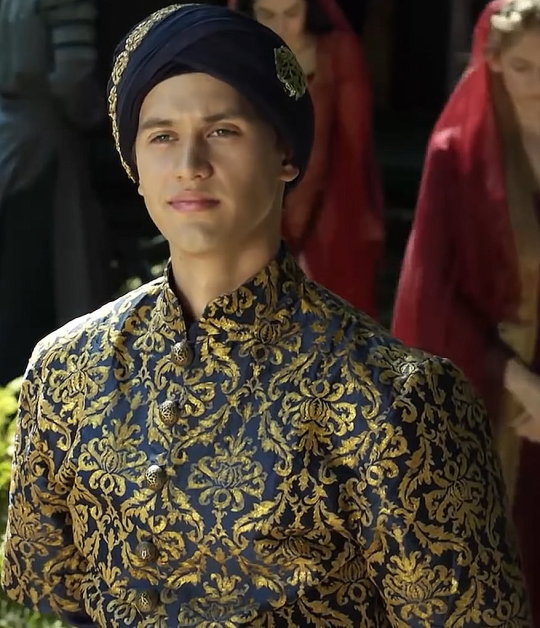


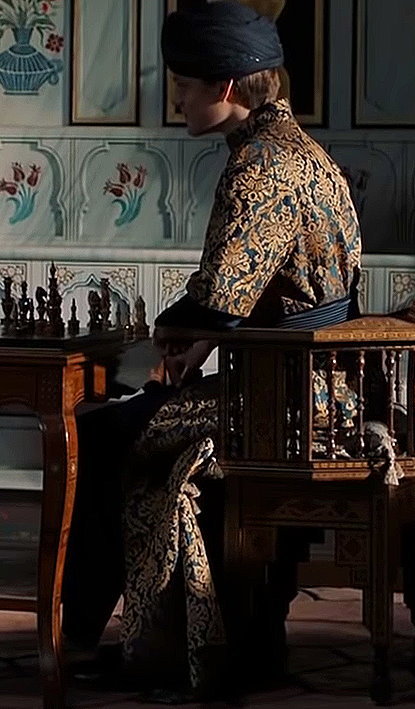
This blue and golden kaftan was first worn by Şehzade Murad (later Sultan Murad III) in the final episode of the fourth season of Magnificent Century.
It is worn again by Sultan Murad IV in the twenty-sixth episode of the second season of Magnificent Century: Kösem.
#Muhteşem Yüzyıl#Muhteşem Yüzyıl: Kösem#Magnificent Century#Magnificent Century Kösem#Magnificent Century Kosem#period drama#costume drama#historical drama#Şehzade Murad#Sehzade Murad#Şehzade Murad (Son of Nurbanu)#Şehzade Murad (Son of Kösem)#Murad III#Murad IV#reused costumes#recycled costumes
11 notes
·
View notes
Text

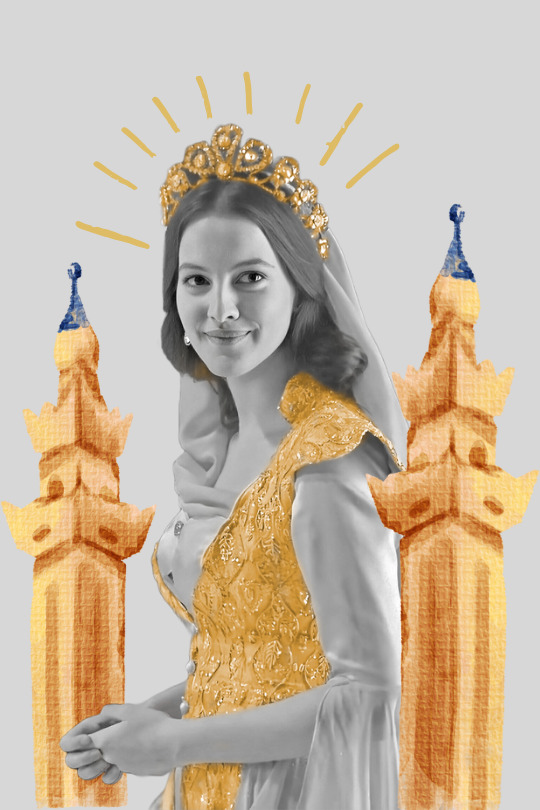

Haseki Ayşe Sultan, consorte de Murad IV
#ottoman woman#murad iv#magnificent century: kösem#mckedit#haseki ayşe sultan#muhteşem yüzıl: kösem#graphic
22 notes
·
View notes
Text





"In some remarkably candid letters Kösem wrote to the grand vezir during Murad's reign, we can trace the young sultan growing independent of his mother's tutelage and her resignation to the fact that he would increasingly manage affairs on his own."
—The Imperial Harem, by Leslie Peirce
#magnificent century#ottoman history#kosem sultan#murad iv#my caps#have no idea how to title this#but basically a series on historical influences within the show
15 notes
·
View notes
Text
One of my many frustrations as an MC and MCK.
When Bayezid makes the (stupid) decision to take refuge with Shah Tahmasp, why wouldn't Firuze make a little comeback? It would have been interesting to see her interact with Bayezid. Due to the liberties taken by the writers with the story, we're no longer close to that for this fiction (especially since I love Firuze, I would have liked Suleiman to discover the truth after it was out of reach just for see his face when he realizes how he is not as attractive as he likes to believe and realizes his stupidity).
Then why not show Pari Khan Khanum during Bayezid arc, an important figure for the Safavids who played an important role in the rise of her brother Ismail II, then perhaps killed him since he had become dangerous because he has been locked up for 19 years (I pay attention to black legends, that's why I say maybe). Pari Khan Khanum was eventually strangled to death. Seeing her would have been an interesting figure in parallel with the Sultanate of Women. She becomes one of the most powerful "blood princesses" as Mihrimah will become, a woman of power who had to face several dangers including the leader of their own country (like Kosem and Turhan for example) and had to get rid of this leader who had become crazy and dangerous after years imprisoned (Ibrahim in Kosem's case for reasons of state and perhaps Pari Khan Khanum if she actually killed his brother) after spending years doing everything to save them (Kosem must have pleaded for Ibrahim's life with Murad surely and Pari Khan Khamun must have shown a lot of cunning to put her brother on the throne) before dying of strangulation (like Kosem). It would have been very interesting to see her in some scenes or only mention her in MCK for introduce the rise of Mihrimah (even though the show portrays Mihrimah as powerless, unlike history) and the rise and fall of female regents like Kosem.
Another frustrating point is that there is no Shah Abbas in MCK unlike Shah Tahmasp. Instead we were served a bad plot with Farya's uncle (sorry for those who liked it, that's just my point of view). Plus like Murad , Shah Abbas got a terrible childhood ,inherited a very unstable situation (although in the case of Murad it was not the fault of Kosem who managed the regency well and did the best she could) which could announce their terrible paranoia ;their loved ones will suffer although even if they are competent leaders, the succession will leave something to be desired because of their faults ( at least in the case of Murad with Ibrahim, I am not sure about Shah Safi the grandson of Shah Abbas) , which would be an interesting parallel. The screenwriters destroy everything even when the best scenario of these historical events is better than fiction.
P.S: I'm talking about historical Murad IV whom I respect although he does things that I disapprove of. The Show Murad is in my eyes a kid who is stuck for eternity in a phase of adolescent crisis and who blames everyone including his mother 24 hours a day and thinks that he is the center of the world to the point that he tires me out (sorry again for Show Murad fans, this is once again just my opinion)
#Frustration#magnificent century kosem#magnificent century#kosem sultan#Turhan Sultan#Mihrimah Sultan#suleiman the magnificent#historical interpretation#historical inaccuracies#Murad IV#Sultan Murad#women in power
6 notes
·
View notes
Note
Sultan Sulyman and Sultan Murad relationship and favoritism towards with their sisters. Do you think they had favorite sisters and were they obvious with their favoritism towards them?
With Sultan Suleyman:-
First of all I believe SS showed more favoritism towards his children more than his sisters. The favorite to him has to be Hatice but again the difference between treatment is not that far cause his “favoritism” could be justified with some reasonable reasons.
1-Hatice. As I said she is his favorite because that’s what the show writers are showing us. Talking about Sah jealousy towards Hatice is stated as Hatice was the favorite. We are also shown that only Hatice was present in his prince-hood , she always accompanied his mother who SS loved so much. Which leads me to say the reason behind this “favoritism” is for the fact that he spent more time with her than he did with his other sisters. Despite SS actions post Ibrahim’s death, you can tell he loves and adores her but he is just an asshole who can’t show people around him appreciation. He understands her grief and sorrow after Ibrahim’s death and he tells Hurrem to take care of her which shows he cares…well the intention is there but why not him to take care Hatice? Try to explain himself to her? Show her what Ibrahim did wrong. Yes that won’t repair the damage nor un-orphan her children nor un-widow her but at least give an explanation. SS didn’t just kill her husband , the father of her kids, decisived them. That’s what Hatice said confronting him that Ibrahim was eating with him like his companion and SS stabbed him…gave him no chance to at least save himself. An explanation would have helped Hatice at least tad bit. So yeah in conclusion while SS deeply loved her so much, he unknowingly ruined her with his actions that he refuses to explain.
2-Sah. SS sees Sah in the same light he saw his Valide , for him Sah is wise person who would calculate her moves and would try to make the best out of the situation those are things he saw in Sah which were similar to Valide. Which is true Sah’s character was like this she was more collected and more calculated than Hatice. After Ibrahim’s death Sah showed SS no sorrow, she was sad and mad, but in front of SS she shows him that he is the only commander and his word shouldn’t be doubted or negotiated. Sah plays it smartly in front of SS and he is oblivious or not oblivious but doesn’t even believe that there is an opinion that could defy his and if she is showing him what he wants to see , he is content.
3-Beyhan. So this relationship didn’t develop much and it went down before it even started. Again he loves her like he loves Hatice but here where I can say there was favoritism. Unlike Hatice, Beyhah is aware of the reason her husband got executed, yeah she didn’t forgive him which I am not saying she should or that if Hatice was shown what Ibrahim said she’d forgive him, I am stating clear difference between them. Another difference is how SS let go Beyhan , he was sad at her leaving but he let go her unlike Hatice who he wanted her to be there, wanted Hurrem , Sah and Gulfem to be near her , wanted to marry her so she would forget. While it came out at the end that letting go Beyhan did beyhan a favor mentally, holding into Hatice damaged her mentally. So yeah it is undeniable it is Beyhan that was able to be peaceful while Hatice not despite Beyhan not being his favorite. SS thought by trying to hold into Hatice that he is helping her and supporting , yeah it did the exact opposite but at the end I am talking that through SS actions it showed that Beyhan isn’t his favorite nor close to him (good for her honestly)
4-Fatma. Despite that Beyhan had lesser screen time than Fatma, Fatma relationship with SS imo was barely there. She’s there , he is there, she respect him and that’s literally it for the most part. It got interesting at the end where she confronted SS which was pretty much needed tbh. SS clearly knew that Fatma isn’t there for some family reunion, he is at times visibly annoyed with her specially the time where Mihrimah got sick , or tried to make herself sick, he was rolling his eyes at her words. The way he treated her isn’t like the way he treated the other 3. Sure he didn’t hate her, but he didn’t put her over Hurrem like he did with the others.
With Sultan Murad IV:-
See this is more complicated cause unlike Hatice and Sah for example, both Atike and Geverhan appear together from the start and the one we see more than the other is after a disaster. So I won’t rank them I’ll talk about both at once.
I guess Murad might have favored Atike over Geverhan but generally he ruined both. His decision to marry Atike to Silhatar was what Atike wanted so it might seem that yeah Murad is favoring Atike but imo Atike’s desire to be with Silhatar is not what made him take such decision. Murad knows Silhatar doesn’t like Atike so as a punishment he marries him to Atike. So he didn’t go about it as supportive brother thinking about his sister, but more like sultan who wanted to punish his subject even if it means putting his sister in an unhappy marriage and making others including Geverhan and Kosem think that he is favoring Atike. To Geverhan he is favoring Atike and side lining her, to Geverhan it is Atike who is getting what she desires and she is getting the short end of the stick. I don’t blame Geverhan fir thinking like that honestly. As for Murad killing Topal pasha well it was kinda like parallelism to SS killing his sisters’ husband and it was historically accurate TIMs surprised me with this one but they love blood so anyway. The death of Topal wasn’t capitalized as much and if SS is an asshole, Mu rat was more asshole-er than him, the soulless “Your husband is a traitor Geverhan and as any traitor he got what he deserved” asshole SS in this moment ,despite Ferhat being rebel and Ibrahim being arrogant, he still tried to comfort his sisters make them get it all out in that moment at least. But oh Mu rat? He didn’t wanna let her go and he was like “so what I killed your husband and orphaned your child? Get over it”. Not that SS wasn’t like “get over it” but he was like that later on not the day he killed her husband. Then the whole story was thrown out like nothing happened. Overall I don’t think Murad and his sisters relationship developed well I maybe at his end when he made Atike the head of the harem we could say he trust her but at the same time he did this just to restrict Kosem not to give Atike a high regard or anything.
#magnificent century#muhteşem yüzyıl#magnificent century: kösem#muhteşem yüzyıl kösem#sultan suleyman#Murad IV#two asshole brothers to conclude#Geverhan deserved better
11 notes
·
View notes
Note
Ayşe Haseki sultan 4. Murad love
Based (≖ ‿ ≖) | ᎢℋᎪɳᏦ ᎩӫᏌ ✿♪♫
1 note
·
View note
Text

Your daughter Hanzade Sultan witnessed Farya Sultan attack you. She got scared and ran to her father. When your yandere husband Sultan Murad, heard about what happened, was very angry with Farya Sultan.
#yandere magnificent century kosem#yandere sultan murat iv x reader#sultan murat iv x reader#yandere sultan 4 murat#yandere sultan murat 4#yandere sultans#yandere ottoman empire#yandere sultan murad iv#yandere sultan murad iv x reader#yandere sultan murat iv
94 notes
·
View notes
Text
The fact that I'm getting the closest experience in my life to being in a literary café circle outside of discussions with my siblings and friends, and it's over Magnificent Fuc*ing Century is proof that this site is wonderful, dramas are amazing, and nerdom is stronger than everything.
#magnificent century#muhteşem yüzyıl#magnificent tumblring#magnificent memes#Be careful or Murad IV is gonna personally beat us in a dark alley#Magnificent Café
12 notes
·
View notes
Text


This dark blue, creme and golden kaftan was first worn by Sultan Osman II in the twenty-seventh episode of the first season of Magnificent Century: Kösem. It briefly appeared again on a teenage Sultan Murad IV in a flashback in the twenty-sixth episode of the second season.
#Muhteşem Yüzyıl: Kösem#Magnificent Century Kösem#Magnificent Century Kosem#period drama#costume drama#historical drama#Osman II#Şehzade Osman#Sehzade Osman#Şehzade Osman (Son of Mahfiruze)#Murad IV#Şehzade Murad#Sehzade Murad#Şehzade Murad (Son of Kösem)#reused costumes#recycled costumes
10 notes
·
View notes
Text
Even as he is dying Murad still manages to be the most insufferable character in season 2.
#sultan murad iv#kosem la sultana#magnificent century: kösem#muhteşem yüzyıl: kösem#magnificent century#muhteşem yüzyıl#yes he's the villain and so he's meant to be hateable but he is SO HATEABLE
15 notes
·
View notes
Text
This Black costume with buttons in front is worn two times in Magnificent Century: Kösem, First worn on Ekin Koç as Sultan Ahmet Season 1 Episode 15 (2016) and worn again on Metin Akdülger as Murad 4 in Season 2 Episode 16 (2017)

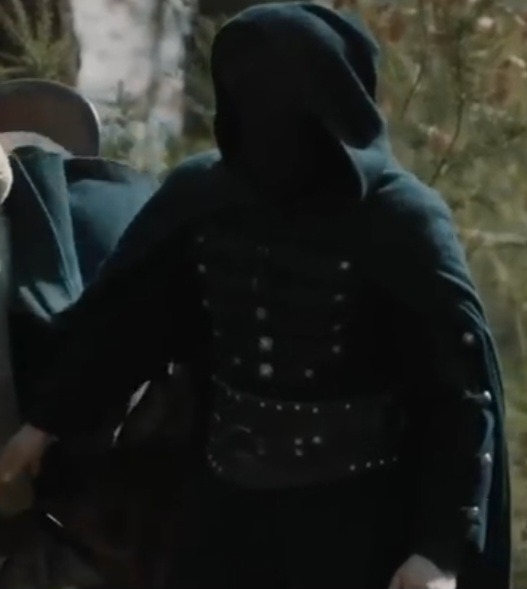
#recycled costumes#magnificent century kösem#sultan ahmet#sultan murad iv#historical drama#period drama#costume drama#reused costume#reused costumes
0 notes
Photo

Sultan Murad IV - Reign and Legacy
Repairing and Enriching Sacred Sites
The Tombs of Imam-i Azam and Sheikh Abdulkadir Geylani, revered figures in Islam, underwent extensive repairs supervised by Sheikhulislam. They were adorned with opulent gold and silver lamps along with jewelry, enhancing their grandeur and significance. Additionally, Mustafa Pasha, the trusted guard of Sultan Murad IV, displayed profound devotion by sending a diamond to adorn the Prophet’s Tomb in Medina (Ravza-i Mutaharra).
International Diplomacy and Remarkable Gifts
Sultan Murad IV’s reign saw prosperity that extended its influence to the farthest reaches of the east. An envoy from India arrived in Musul bearing lavish gifts while the Sultan was en route from Baghdad to Istanbul. Among these gifts was an exquisitely decorated belt valued at fifty thousand piasters and a unique helmet crafted from elephant’s ear and rhinoceros hide, reputed to be impervious to bullets and swords. In a display of his prowess, Sultan Murad IV pierced the helmet effortlessly with his spear, filling it with gold florins before returning it to the Indian Sovereign’s palace.
Restoring Order and Stability
Sultan Murad IV’s rule was marked by his unwavering authority, which he wielded to maintain order within the empire, rescuing it from the brink of collapse. However, the toll of such authoritarianism took a toll on him, leaving him exhausted. Upon his brother Sultan Ibrahim’s ascension to the throne, order had already been established, aided by a treasury brimming with resources.
The Reformative Era Under Sultan Ibrahim
During Sultan Ibrahim’s reign, characterized by historians as a period of folly, Kara Mustafa Pasha, a seasoned vizier, served as Grand Vizier. Under his leadership Istanbul Walking Tour, the treasury remained stable, intoxication was abolished, and administrative reforms were implemented, including city registrations and the first census. He ensured timely payments for Janissaries and Spahis, with salaries fixed at eighty aspers of pure silver. Moreover, he introduced the practice of allocating clothing aid annually from the treasury. Despite his remarkable achievements, Kara Mustafa Pasha met an untimely end through execution in 1053.
Legacy and Conclusion
Sultan Murad IV’s reign left an indelible mark on Ottoman history, marked by prosperity, diplomatic prowess, and authoritative governance. His legacy endured through the reforms initiated under Sultan Ibrahim, underscoring the significance of stable governance and administrative efficiency in sustaining an empire.
0 notes
Photo
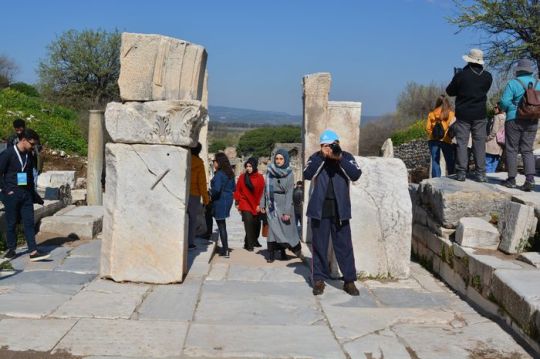
Sultan Murad IV - Reign and Legacy
Repairing and Enriching Sacred Sites
The Tombs of Imam-i Azam and Sheikh Abdulkadir Geylani, revered figures in Islam, underwent extensive repairs supervised by Sheikhulislam. They were adorned with opulent gold and silver lamps along with jewelry, enhancing their grandeur and significance. Additionally, Mustafa Pasha, the trusted guard of Sultan Murad IV, displayed profound devotion by sending a diamond to adorn the Prophet’s Tomb in Medina (Ravza-i Mutaharra).
International Diplomacy and Remarkable Gifts
Sultan Murad IV’s reign saw prosperity that extended its influence to the farthest reaches of the east. An envoy from India arrived in Musul bearing lavish gifts while the Sultan was en route from Baghdad to Istanbul. Among these gifts was an exquisitely decorated belt valued at fifty thousand piasters and a unique helmet crafted from elephant’s ear and rhinoceros hide, reputed to be impervious to bullets and swords. In a display of his prowess, Sultan Murad IV pierced the helmet effortlessly with his spear, filling it with gold florins before returning it to the Indian Sovereign’s palace.
Restoring Order and Stability
Sultan Murad IV’s rule was marked by his unwavering authority, which he wielded to maintain order within the empire, rescuing it from the brink of collapse. However, the toll of such authoritarianism took a toll on him, leaving him exhausted. Upon his brother Sultan Ibrahim’s ascension to the throne, order had already been established, aided by a treasury brimming with resources.
The Reformative Era Under Sultan Ibrahim
During Sultan Ibrahim’s reign, characterized by historians as a period of folly, Kara Mustafa Pasha, a seasoned vizier, served as Grand Vizier. Under his leadership Istanbul Walking Tour, the treasury remained stable, intoxication was abolished, and administrative reforms were implemented, including city registrations and the first census. He ensured timely payments for Janissaries and Spahis, with salaries fixed at eighty aspers of pure silver. Moreover, he introduced the practice of allocating clothing aid annually from the treasury. Despite his remarkable achievements, Kara Mustafa Pasha met an untimely end through execution in 1053.
Legacy and Conclusion
Sultan Murad IV’s reign left an indelible mark on Ottoman history, marked by prosperity, diplomatic prowess, and authoritative governance. His legacy endured through the reforms initiated under Sultan Ibrahim, underscoring the significance of stable governance and administrative efficiency in sustaining an empire.
0 notes
Photo

Sultan Murad IV - Reign and Legacy
Repairing and Enriching Sacred Sites
The Tombs of Imam-i Azam and Sheikh Abdulkadir Geylani, revered figures in Islam, underwent extensive repairs supervised by Sheikhulislam. They were adorned with opulent gold and silver lamps along with jewelry, enhancing their grandeur and significance. Additionally, Mustafa Pasha, the trusted guard of Sultan Murad IV, displayed profound devotion by sending a diamond to adorn the Prophet’s Tomb in Medina (Ravza-i Mutaharra).
International Diplomacy and Remarkable Gifts
Sultan Murad IV’s reign saw prosperity that extended its influence to the farthest reaches of the east. An envoy from India arrived in Musul bearing lavish gifts while the Sultan was en route from Baghdad to Istanbul. Among these gifts was an exquisitely decorated belt valued at fifty thousand piasters and a unique helmet crafted from elephant’s ear and rhinoceros hide, reputed to be impervious to bullets and swords. In a display of his prowess, Sultan Murad IV pierced the helmet effortlessly with his spear, filling it with gold florins before returning it to the Indian Sovereign’s palace.
Restoring Order and Stability
Sultan Murad IV’s rule was marked by his unwavering authority, which he wielded to maintain order within the empire, rescuing it from the brink of collapse. However, the toll of such authoritarianism took a toll on him, leaving him exhausted. Upon his brother Sultan Ibrahim’s ascension to the throne, order had already been established, aided by a treasury brimming with resources.
The Reformative Era Under Sultan Ibrahim
During Sultan Ibrahim’s reign, characterized by historians as a period of folly, Kara Mustafa Pasha, a seasoned vizier, served as Grand Vizier. Under his leadership Istanbul Walking Tour, the treasury remained stable, intoxication was abolished, and administrative reforms were implemented, including city registrations and the first census. He ensured timely payments for Janissaries and Spahis, with salaries fixed at eighty aspers of pure silver. Moreover, he introduced the practice of allocating clothing aid annually from the treasury. Despite his remarkable achievements, Kara Mustafa Pasha met an untimely end through execution in 1053.
Legacy and Conclusion
Sultan Murad IV’s reign left an indelible mark on Ottoman history, marked by prosperity, diplomatic prowess, and authoritative governance. His legacy endured through the reforms initiated under Sultan Ibrahim, underscoring the significance of stable governance and administrative efficiency in sustaining an empire.
0 notes
Photo
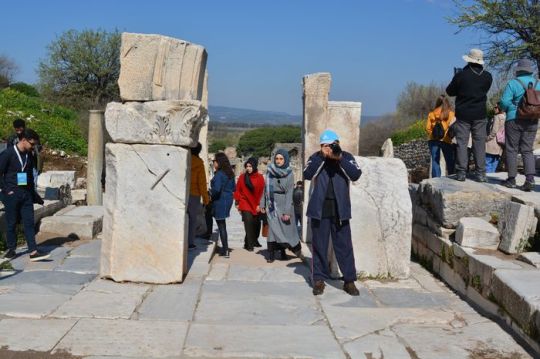
Sultan Murad IV - Reign and Legacy
Repairing and Enriching Sacred Sites
The Tombs of Imam-i Azam and Sheikh Abdulkadir Geylani, revered figures in Islam, underwent extensive repairs supervised by Sheikhulislam. They were adorned with opulent gold and silver lamps along with jewelry, enhancing their grandeur and significance. Additionally, Mustafa Pasha, the trusted guard of Sultan Murad IV, displayed profound devotion by sending a diamond to adorn the Prophet’s Tomb in Medina (Ravza-i Mutaharra).
International Diplomacy and Remarkable Gifts
Sultan Murad IV’s reign saw prosperity that extended its influence to the farthest reaches of the east. An envoy from India arrived in Musul bearing lavish gifts while the Sultan was en route from Baghdad to Istanbul. Among these gifts was an exquisitely decorated belt valued at fifty thousand piasters and a unique helmet crafted from elephant’s ear and rhinoceros hide, reputed to be impervious to bullets and swords. In a display of his prowess, Sultan Murad IV pierced the helmet effortlessly with his spear, filling it with gold florins before returning it to the Indian Sovereign’s palace.
Restoring Order and Stability
Sultan Murad IV’s rule was marked by his unwavering authority, which he wielded to maintain order within the empire, rescuing it from the brink of collapse. However, the toll of such authoritarianism took a toll on him, leaving him exhausted. Upon his brother Sultan Ibrahim’s ascension to the throne, order had already been established, aided by a treasury brimming with resources.
The Reformative Era Under Sultan Ibrahim
During Sultan Ibrahim’s reign, characterized by historians as a period of folly, Kara Mustafa Pasha, a seasoned vizier, served as Grand Vizier. Under his leadership Istanbul Walking Tour, the treasury remained stable, intoxication was abolished, and administrative reforms were implemented, including city registrations and the first census. He ensured timely payments for Janissaries and Spahis, with salaries fixed at eighty aspers of pure silver. Moreover, he introduced the practice of allocating clothing aid annually from the treasury. Despite his remarkable achievements, Kara Mustafa Pasha met an untimely end through execution in 1053.
Legacy and Conclusion
Sultan Murad IV’s reign left an indelible mark on Ottoman history, marked by prosperity, diplomatic prowess, and authoritative governance. His legacy endured through the reforms initiated under Sultan Ibrahim, underscoring the significance of stable governance and administrative efficiency in sustaining an empire.
0 notes